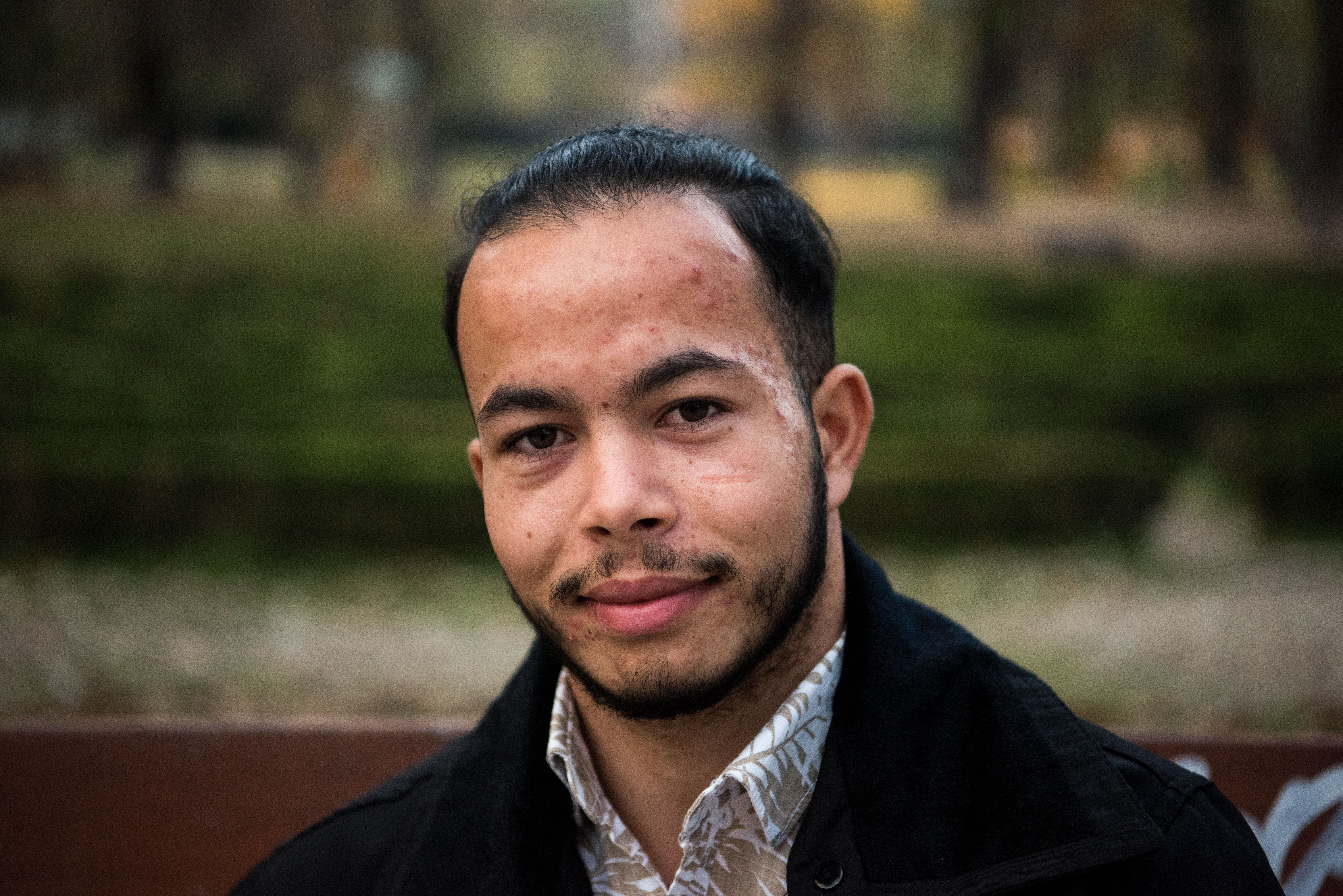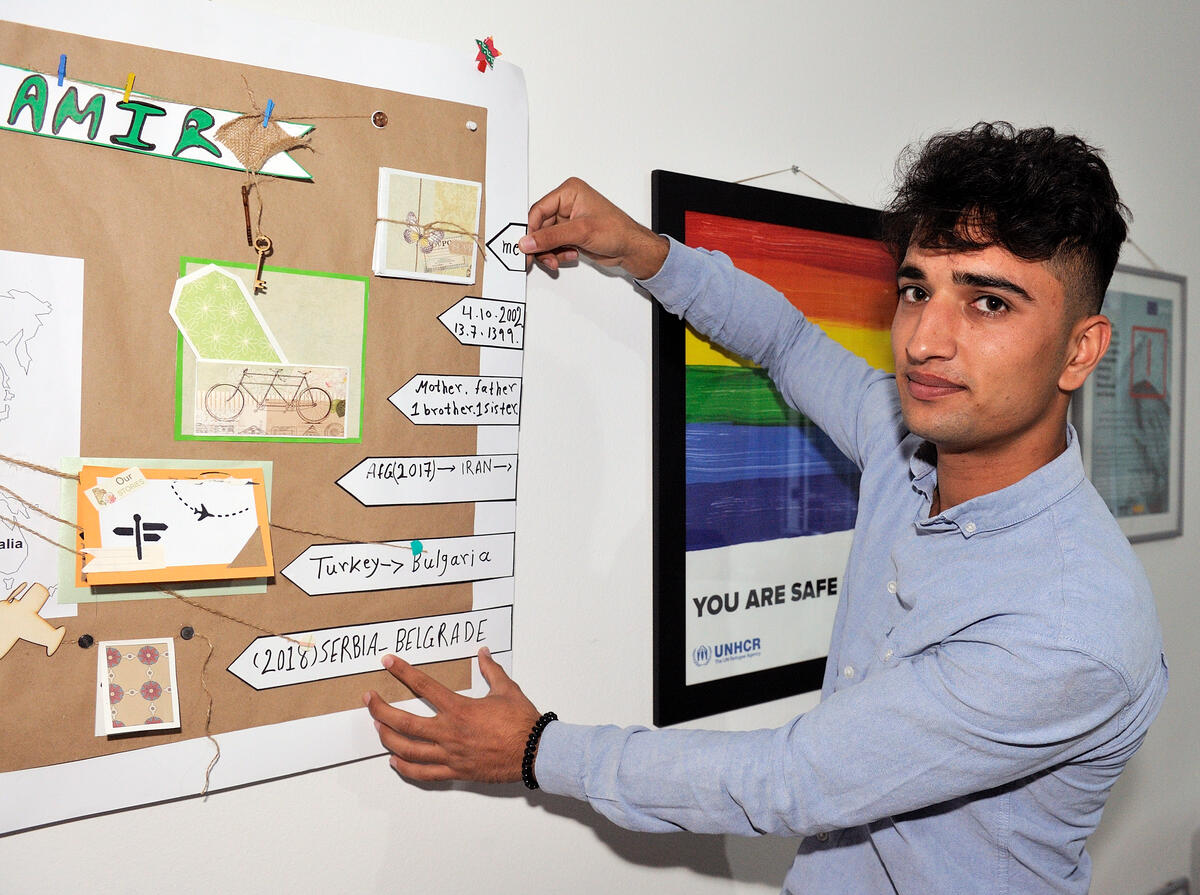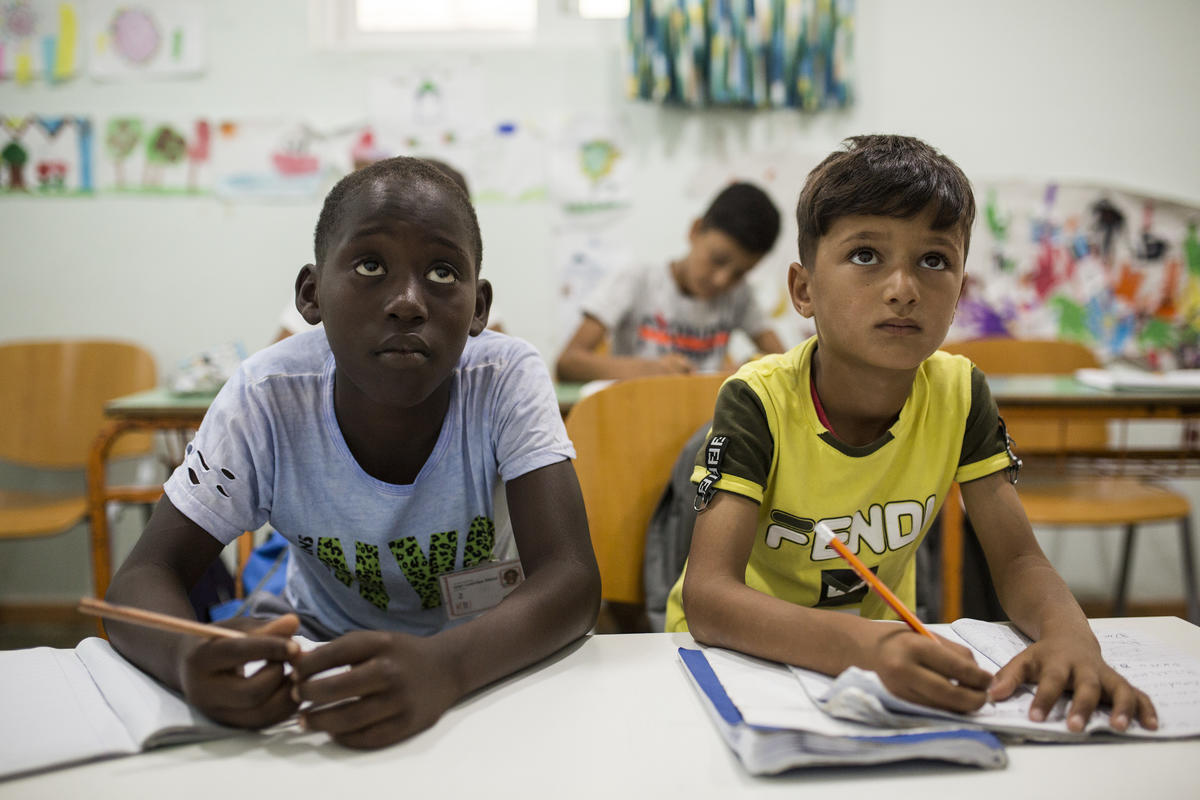Kosovo Crisis Update
Kosovo Crisis Update
Albania
Only one refugee crossed the border at Morini Tuesday, and he had an interesting tale to tell.
His family was from Korisa, the village east of Prizren recently hit by a NATO airstrike. He told UNHCR field staff that around two months ago, while he was at work in Prizren, his family fled to the nearby hills with many other villagers.
Recently, after being harassed by Serbian shelling in the forest and lack of food, his family and other villagers were forced to return to their homes.
After they had returned, police rounded up many villagers and put them in the compound of a factory workshop. The police later withdrew from the compound but continued to guard the villagers "from a distance."
The compound was eventually hit by NATO strikes. Many people were killed, he said, and members of his family were wounded and hospitalized in Prizren, where he visited them.
He had continued to work in the town during this entire episode. After the incident at Korisa, he was arrested by police and detained for three days at a police station where he was beaten with a metal stick on his feet.
Accused of being affiliated with the Kosovo Liberation Army, he was taken from Prizren to the border Tuesday. There is no independent confirmation of this story.
A total of 1,409 people left Kukes Tuesday for other parts of Albania. UNHCR's information campaign to encourage people to move out of Kukes for security reasons has resulted in over 4,000 refugees moving out of the region. 2,074 people had left Kukes Monday for points south. The campaign will continue to be reiterated in coming days.
Some refugees were helicoptered on Tuesday to the site of a new American-built camp at Fier, for a "go-and-see" visit. Their assessment appeared mixed: interested but not overwhelmingly positive. It was also reported that in the UAE-administered camp in Kukes, some locals had been touring tents urging women to leave and move south. They were apparently masquerading as UNHCR/humanitarian officials. UNHCR staff will be visiting tents telling everyone, especially women, not to accept any offers unless they are absolutely sure the people involved are legitimate UNHCR staff.
Some additional information is available from the 19 refugees who crossed Monday at Morini. They consisted of four families from Prizren who were visited by police on Sunday and told they were about to be expelled. One of their homes was destroyed and on Monday the group was trucked to the border. One man said he was beaten on his hands and feet by police authorities at a local station. He showed signs of physical abuse and was sent for treatment.
Town authorities, worried about the large presence of refugees, again expressed great concern with the water situation in Kukes. The water supply has already been reduced to four-six hours per day and the authorities have threatened to cut off all water to the refugees on Thursday.
UNHCR and Oxfam are working on plans both to strengthen the supply to the town itself and also to provide water directly to the refugee camps.
FYR of Macedonia
Nearly 2,500 refugees arrived in the FYR of Macedonia on Tuesday and very early Wednesday morning, amid reports of a new wave of expulsions conducted by Serbian security forces.
The arrivals included 953 people who came in on a train Monday morning from the Pristina suburb of Kosovo Polje, which also had picked up passengers along the way south to the border. Some of these people were among the 1,000 passengers of a train which was turned back upon reaching the border on Monday.
Also on Tuesday, 110 refugees transported by a bus to the border entered through the Tabanovce crossing. The refugees, who came from the municipalities of Urosevac, Obilic and Glogovac, were taken to Senekos and Stenkovec camps.
The refugees told similar stories: Serb forces were emptying villages and were occupying civilian houses and using barns to store artillery and anti-aircraft guns. They also said food was becoming scarce.
In the night of Tuesday to Wednesday, an additional group of around 1,400 people arrived at Blace in about 70 tractor-trailers and other vehicles. They were told to leave the tractor-trailers and cars behind and proceed to the FYR of Macedonia on foot.
There were these other developments:
- A WHO team says the situation in the camps is stable despite reports of some cases of bloody diarrhoea. These cases have been investigated and WHO says there is no indication of a potential epidemic. However, WHO stresses the need to promote hygiene among refugees.
- Stenkovec I has been connected to a borehole and the water supply situation is expected to improve there. Stenkovec II will also be connected to the water supply. A second borehole, to be used as backup for both camps, is under construction.
Republic of Montenegro
Around 1,000 Kosovars arrived in Montenegro over the past four days in a continuing influx from western Kosovo.
Meanwhile, UNHCR has transported to Ulcinj 83 of the 106 Kosovars arrested and detained by the Yugoslav army at the border over the weekend. The group was subsequently released in Tutin and came to Rozaje. At least 17 men reportedly remain in detention and the rest are in Rozaje with their families.
Those released said that following their arrest on Saturday, they were put on buses and taken to Kosovska Mitrovica in northern Kosovo, where they originated. But on arrival there, Serbian authorities ordered them to go back to Tutin, where they were later freed.
UNHCR-IOM Humanitarian Evacuation Programme
A total of 1,128 refugees departed on Tuesday from the FYR of Macedonia for third countries under the humanitarian evacuation programme, far below UNHCR's daily target of a minimum of 2,000 departures. Destinations were: Austria, Canada, Czech Republic, Denmark, Germany, Norway and Turkey.
So far, 52,643 refugees have departed under the programme in which UNHCR has received offers for 135,000 places in 39 countries.






